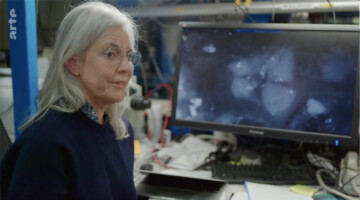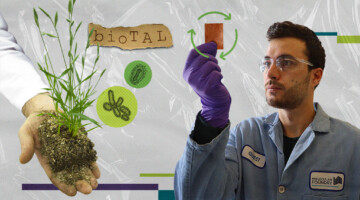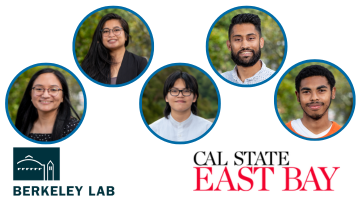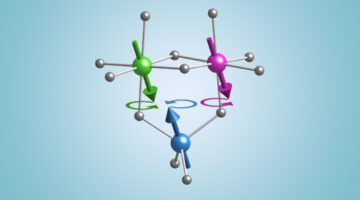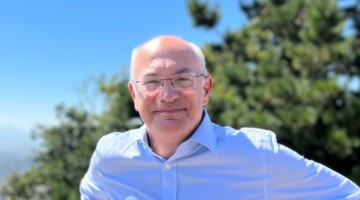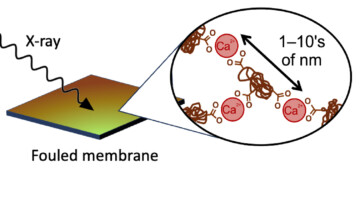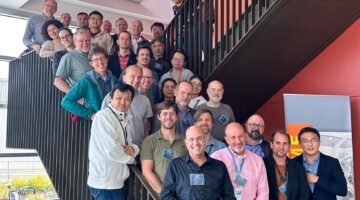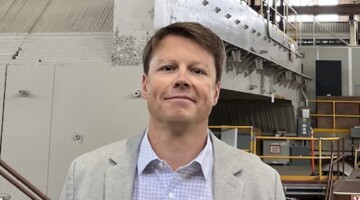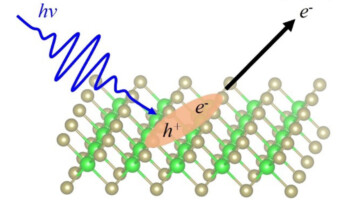A study on the remarkable durability of 2000-year old Roman concrete, by ALS user Marie Jackson with ALS beamline scientist Nobumichi Tamura, was recently highlighted in “Miracle Materials,” a science documentary produced by a German-French company, Gruppe 5, for airing on the Eurpean public service channel, ARTE. Read more »
Making Renewable, Infinitely Recyclable Plastics Using Bacteria
Scientists engineered microbes to make the ingredients for recyclable plastics—replacing finite, polluting petrochemicals with sustainable alternatives. The new approach shows that renewable, recyclable plastics are not only possible, but also outperform those from petrochemicals. Read more »
Catching up with ASPIRES Interns from 2022 and 2023
The ASPIRES program is a 10-week paid internship matching undergraduate students from California State East Bay with mentors in Berkeley Lab’s Energy Sciences Area. We caught up with some of the ASPIRES interns from 2022 and 2023 to hear about their internship experience and what they’re working on! Read more »
Capturing the Spin Dynamics of a Complex Magnetic Material
Magnetic iron oxides (ferrites) are complex materials with broad electronic applications that are often driven by microwaves. Here, researchers have precisely measured the spin behavior of several distinct cations in a ferrite material under an applied microwave field, validating a longstanding assumption about magnetic oxide dynamics. Read more »
Greetings from New ALS Director Dimitri Argyriou
ALS Director Dimitri Argyriou, who arrived this month, is excited to join the vibrant community at our facility. He invites everyone to participate in this strongly collaborative environment and shape the future of the ALS. Read more »
Keeping Water-Treatment Membranes from Fouling Out
When you use a membrane for water treatment, junk builds up on the membrane surface—a process called fouling—which makes the treatment less efficient. In this work, researchers studied how membranes are fouled by interactions between natural organic matter and positively charged ions commonly found in water. Read more »
Beamline Optics and Modeling School (BLOMS) 2023
The ALS hosted its first Beamline Optics and Modeling School (BLOMS 2023), a three-day, hands-on workshop to teach the theory, methods, strategy, and tools used to design and model x-ray beamlines. Experts from four other light sources and one private company showed students the capabilities of modern, freely available tools for x-ray source and beamline modeling. Read more »
New Videos on ALSHub Features
The ALS User Guide now offers a selection of instructional videos describing how to perform tasks in ALSHub. You can follow along to create an account, submit a proposal, schedule your beamtime, and more. Read more »
Simon Leemann, Accelerator Operations & Development Deputy
Simon Leemann’s job is to make sure the accelerator runs well—work that has taken him all over the world. Find out which languages he’s learned to speak as well as what gives him hope for the future. Read more »
Excitons Dance the Two-Step in a 2D Material
Excitonic insulators are a rare form of macroscopic quantum state that can be realized at a high temperature, which can be useful for quantum information science. At the ALS, researchers found that in a 2D material, a novel two-step “folding” behavior in the ARPES data signals the existence of an intermediate exciton gas state. Read more »
- « Previous Page
- 1
- …
- 7
- 8
- 9
- 10
- 11
- …
- 28
- Next Page »
